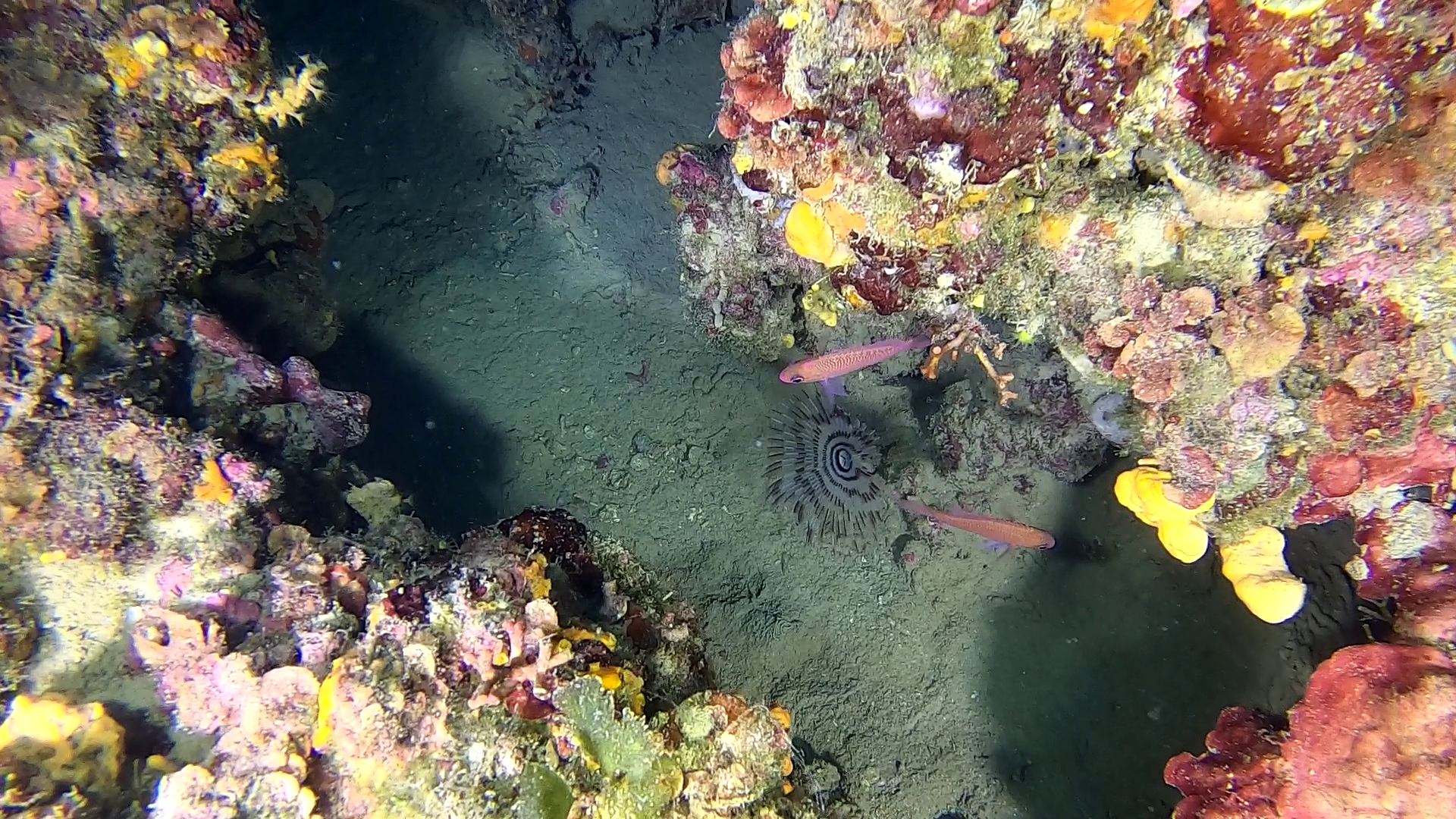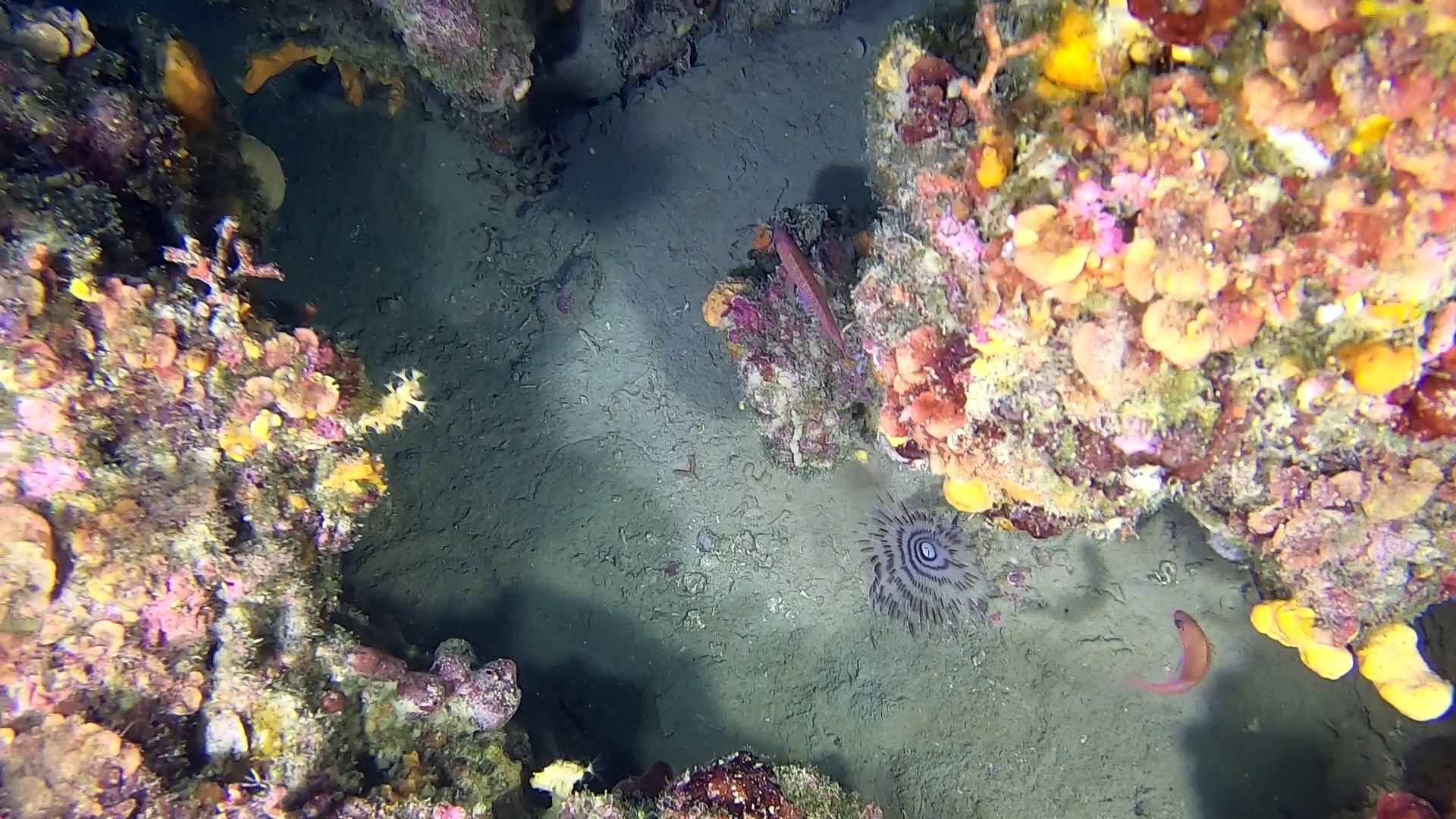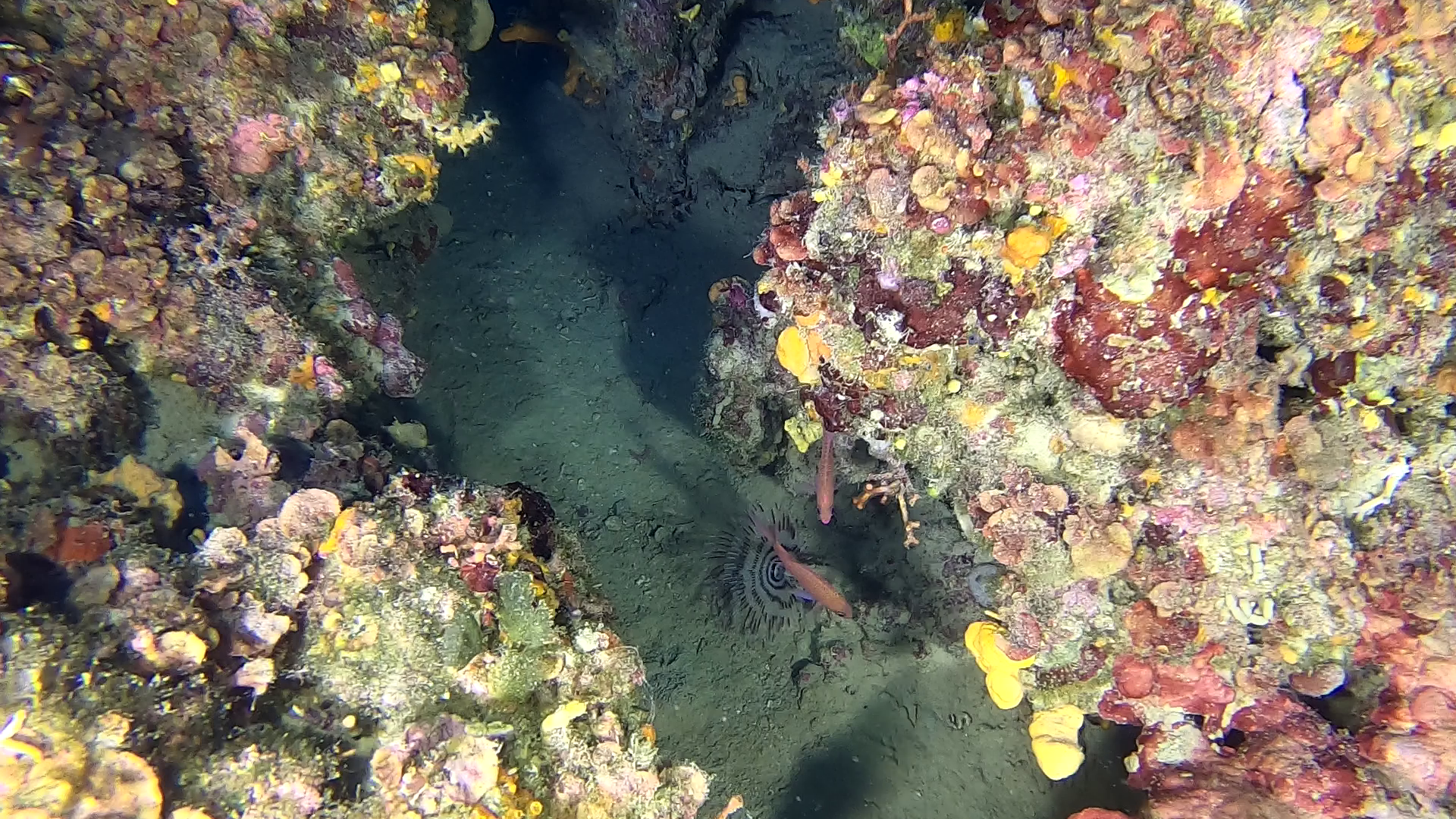Peacock worm - Sabella pavonina
spirografo bispira viola

Sabella pavonina, commonly known as the peacock worm, is a marine polychaete worm belonging to the family Sabellidae. They can be found along the coasts of Western Europe and the Mediterranean. It is found in shallow, tidal waters with a bed of mud, sand or gravel. It is sometimes found on rocks or shipwrecks. It is 10-25 centimetres in length. Its body is elongated and divided into 100-600 smal segments.The head has two fans of feathery tentacles arising from fleshy, semi-circular lobes.
The body is mostly grey-green while the tentacles are brown, red or purple with darker bands. The worm lives inside a smooth tube of fine mud or sand particles held together with mucus, The tube stands upright with the lower end attached to stones and the upper end protruding from the sea bed. When covered by water, the worm extends its tentacles out of the tube to feed by filtering out small food particles. At low tide or when disturbed, it withdraws back into the tube.

Polychaeta also known as the bristle worms or polychaetes, are a paraphyletic class of anelled worms, generally marine. Each body segment has a pair of fleshy protrusions called parapodia that bear many bristles, called chaetae, which are made of chitin. More than 10,000 species are described in this class. Common representatives include the lugworm (Arenicola marina) and the sandworm or clam worm Alitta. Polychaetes as a class are robust and widespread, with species that live in the coldest ocean temperatures of the abyssal plain, to forms which tolerate the extremely high temperatures near hydrothermal vents.
Polychaetes occur throughout the Earth’s oceans at all depths, from forms that live as plankton near the surface, to a 2- to 3-cm specimen (still unclassified) observed by the robot ocean probe Nereus at the bottom of the Challenger Deep, the deepest known spot in the Earth’s oceans. Only 168 species (less than 2% of all polychaetes) are known from fresh waters.

The head, or prostomium, is relatively well developed, compared with other annelids. It projects forward over the mouth, which therefore lies on the animal’s underside. The head normally includes two to four pair of eyes, although some species are blind. These are typically fairly simple structures, capable of distinguishing only light and dark, although some species have large eyes with lenses that may be capable of more sophisticated vision. including the Alciopids’ complex eyes which rival cephalopod and vertebrate eyes. The head also includes a pair of antennae, tentacle-like palps, and a pair of pits lined with cilia. known as “nuchal organs”. These latter appear to be chemoreceptors, and help the worm to seek out food.
(extract from Wikipedia)
https://www.intotheblue.it/2022/02/04/peacock-worm-sabella-pavonina/
